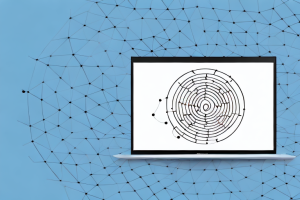How to replace a faulty motherboard on a Dell XPS 15 9575
9 min read
A dell xps 15 9575 laptop with its back panel open
The motherboard is the backbone of your Dell XPS 15 9575. It connects all the important components of your laptop and makes them work together. If the motherboard goes bad, your laptop stops working. In this article, we will give you a step-by-step guide on how to replace a faulty motherboard on a Dell XPS 15 9575, and we’ll dive into some important details to make sure you get the most out of your laptop’s repair.
The importance of identifying a faulty motherboard
Before we jump into the actual replacement process, it’s important to identify if your motherboard is actually faulty. The most common symptoms of a faulty motherboard are that your laptop won’t turn on, or it powers up but won’t display anything on the screen. Other indications include frequent crashes, freezing, or blue screens of death. You may also hear beeping sounds or notice that your laptop is heating up much more than usual. Before proceeding with the replacement, make sure you have diagnosed the problem correctly.
One way to diagnose a faulty motherboard is to perform a visual inspection. Look for any physical damage, such as cracks or burns, on the motherboard. You can also check for loose connections or damaged components. If you’re not comfortable opening up your laptop, you can take it to a professional for a diagnosis.
It’s important to note that a faulty motherboard can sometimes be mistaken for other issues, such as a dead battery or a faulty power adapter. Before assuming that your motherboard is the problem, try troubleshooting these other components first. If you’re still experiencing issues after ruling out other possibilities, then it’s likely that your motherboard needs to be replaced.
Tools you will need for replacing a motherboard
Before you start replacing the motherboard, make sure you have all the necessary tools required. You’ll need a screwdriver, preferably magnetic, a pair of tweezers, an anti-static wrist strap, and a clean workspace. These tools will ensure that the replacement process is smooth and you don’t damage any other components while you’re working on your laptop.
It’s also important to note that you should have a replacement motherboard that is compatible with your laptop model. Check the specifications of your laptop and make sure the replacement motherboard matches those specifications. Additionally, it’s a good idea to have a backup of your important data before starting the replacement process, just in case something goes wrong.
How to remove the battery, hard drive, and other components before replacing the motherboard
Now that you have the tools in place, it’s time to disassemble your laptop. Before starting, make sure to unplug your laptop and remove the battery to avoid any accidental electrocution. Carefully remove the screws and cables holding the hard drive, RAM, Wi-Fi card, and any other components needing removal. Make sure to keep the screws separated and remember where each screw belongs, as this will make re-assembly easy.
It’s important to note that some laptops may have additional components that need to be removed before accessing the motherboard. These could include the keyboard, touchpad, or even the display. Refer to your laptop’s manual or online resources for specific instructions on how to remove these components. Additionally, it’s a good idea to take pictures or make notes of the disassembly process to ensure a smooth re-assembly later on.
Steps to follow when replacing the faulty motherboard
Next, remove screws and cables that hold the motherboard in place. Take a picture of the motherboard before removing it, so you know where everything goes during reassembly. Carefully remove the faulty motherboard and clean any dust or dirt in and around the motherboard. Next, insert the new motherboard in place and secure the screws back in their respective locations. Don’t forget to reattach all cables that go on the motherboard, like the display cable, Wi-Fi antennas, and speaker cables.
Before turning on the computer, double-check that all cables are securely attached and that the motherboard is properly seated. Turn on the computer and check if it boots up properly. If it doesn’t, check all connections and make sure that the RAM and CPU are properly installed. If the computer still doesn’t boot up, there may be an issue with the new motherboard and it may need to be replaced.
It’s important to note that replacing a motherboard can be a complex and delicate process. If you’re not comfortable doing it yourself, it’s best to seek the help of a professional. Additionally, make sure to handle the motherboard with care and avoid touching any of the sensitive components, as static electricity can damage them.
How to properly insert and secure the new motherboard in place
When you are reattaching the cables, make sure they are plugged in the right slots and not too tight or too loose. Use the tweezers or anti-static brush to remove any dirt, dust or hair from the connectors. Use the same screws to secure the new motherboard and double-check that everything is in place. Close up the laptop and power it on to make sure everything is re-assembled correctly and functioning properly.
It is important to note that before inserting the new motherboard, you should ensure that it is compatible with your laptop model. Check the manufacturer’s website or consult with a professional to avoid any compatibility issues. Additionally, if you are not confident in your ability to replace the motherboard, it is recommended to seek the assistance of a professional to avoid causing further damage to your device.
Tips for testing your new motherboard after installation
If everything went smoothly in the replacement process, power up your laptop and test it for any issues. Test the display, Wi-Fi, touchpad, speakers, and other components to ensure everything is working properly. Use diagnostic software to run system checks that will evaluate the new motherboard and ensure proper functionality. Once satisfied that everything is working fine, you can re-install the back cover and replace all other components you removed.
It is important to note that if you encounter any issues during the testing process, it may be necessary to troubleshoot the problem or seek professional assistance. Some common issues that may arise include overheating, slow performance, or compatibility issues with other hardware components. It is also recommended to keep a record of any tests performed and their results, in case any issues arise in the future.
Common mistakes to avoid during the replacement process
During the process of replacing the motherboard, there are some common mistakes you should avoid. Firstly, avoid applying too much force when removing or inserting cables as specific slots can become damaged. Secondly, make sure you have the right replacement motherboard, which is compatible with your laptop. Lastly, make sure you organize the screws and cables you remove so that you can re-attach them with ease when reassembling your laptop.
Another common mistake to avoid during the replacement process is not properly grounding yourself before handling the motherboard. Static electricity can damage the delicate components of the motherboard, so it’s important to discharge any static electricity from your body before touching it. You can do this by touching a grounded metal object before handling the motherboard.
Additionally, it’s important to take your time during the replacement process and not rush through it. Rushing can lead to mistakes and can cause damage to your laptop. Make sure you have all the necessary tools and equipment before starting the replacement process, and follow the instructions carefully. If you’re unsure about any step, it’s better to seek professional help rather than risking damage to your laptop.
Troubleshooting common issues after replacing a faulty motherboard
If you experience any issues with your laptop after replacing the motherboard, don’t panic! In most cases, it’s a simple fix. The most common issue is with the display, where the screen may flicker or remain blank. This can be resolved by updating the display drivers or changing the display settings. Other common issues include overheating, frequent crashes, or audio malfunctions. In such cases, it is always best to seek professional help to avoid causing further damage to your laptop.
It is important to note that before replacing a faulty motherboard, you should always ensure that it is the root cause of the issue. Sometimes, the issue may be caused by other components such as the power supply or the RAM. It is recommended to run diagnostic tests to identify the root cause of the issue before replacing any components. This can save you time and money in the long run.
Understanding the warranty and return policy for your Dell XPS 15 9575
If your Dell XPS 15 9575 is under warranty, the replacement motherboard or repair will be covered. If it isn’t, you will have to spend some money on the replacement or repair, depending on the cost. Make sure you’re aware of the warranty on your device and the terms of the return policy, including the requirements for the return of your device.
It’s important to note that the warranty on your Dell XPS 15 9575 may vary depending on the country or region you purchased it in. Additionally, some warranties may only cover certain types of damage or defects, so it’s important to read the fine print and understand what is and isn’t covered. If you need to return your device, make sure to follow the instructions provided by Dell and ensure that it is properly packaged and protected during shipping to avoid any further damage.
How to prevent future motherboard issues on your Dell XPS 15 9575
You can prevent future motherboard issues by keeping your laptop well maintained and not exposing it to any physical damages, overheating or liquids. Avoid handling it nonchalantly and always keep it well secured against sudden falls or impacts. If your laptop starts to show any signs of malfunction, get it checked by professionals to avoid any further damage.
Frequently asked questions about replacing a Dell XPS 15 9575 motherboard
Can I replace my Dell XPS 15 9575 motherboard myself?
Yes, you can. With the right tools and proper guidance, replacing the motherboard should be easy.
Which motherboard should I choose for my Dell XPS 15 9575?
You should select a motherboard that is compatible with your Dell XPS 15 9575. The serial number on your device will help you to find the right replacement motherboard for your laptop.
Expert advice on selecting a reliable replacement motherboard for your Dell XPS 15 9575
If you have any doubts about the right motherboard to install, consult with Dell or a licensed repair technician. The experts will guide you on the compatibility, and make sure you’re not wasting your money on the wrong motherboard replacement.
The pros and cons of DIY vs professional motherboard replacement
DIY motherboard replacement can save you money, but the risks associated are high. If you have no experience and knowledge of how to replace a laptop motherboard, it’s advisable to seek assistance from professionals. Professional replacement will give you peace of mind and confidence in knowing your laptop is in the hands of experts who have the technical know-how and proper equipment.
Comparing the cost of repairing vs replacing a faulty Dell XPS 15 9575 motherboard
The cost of repairing a Dell XPS 15 9575 motherboard can vary depending on the damage caused. Replacing the motherboard entirely may be more cost-effective if the damage is extensive. Make sure you have a clear understanding of the costs associated with repairing or replacing your motherboard, so you can make the best decision for your budget.
With these simple steps and expert tips, you can easily replace the motherboard on your Dell XPS 15 9575. Make sure to take your time, use the right tools, and follow the instructions carefully to ensure that your laptop is repaired correctly. Good luck!


